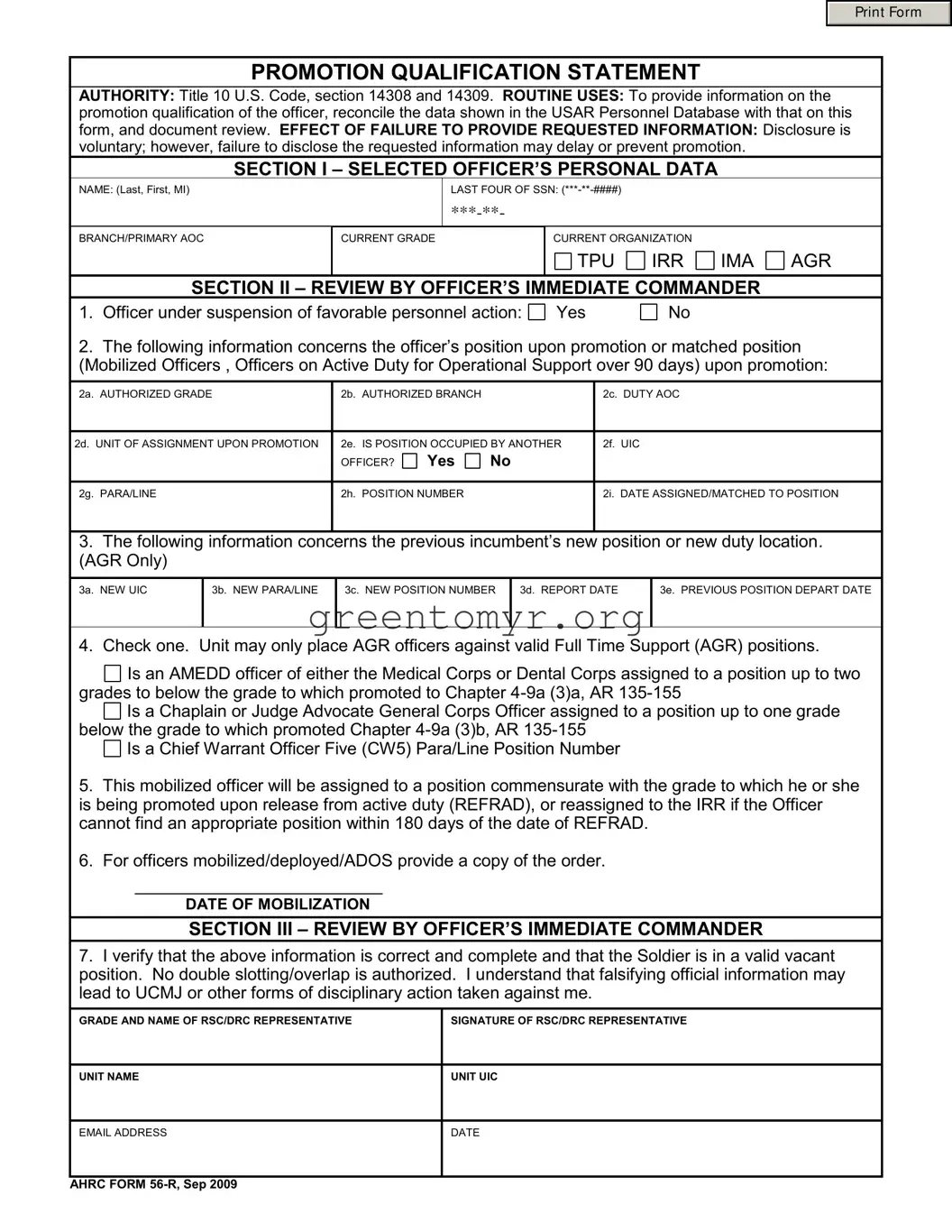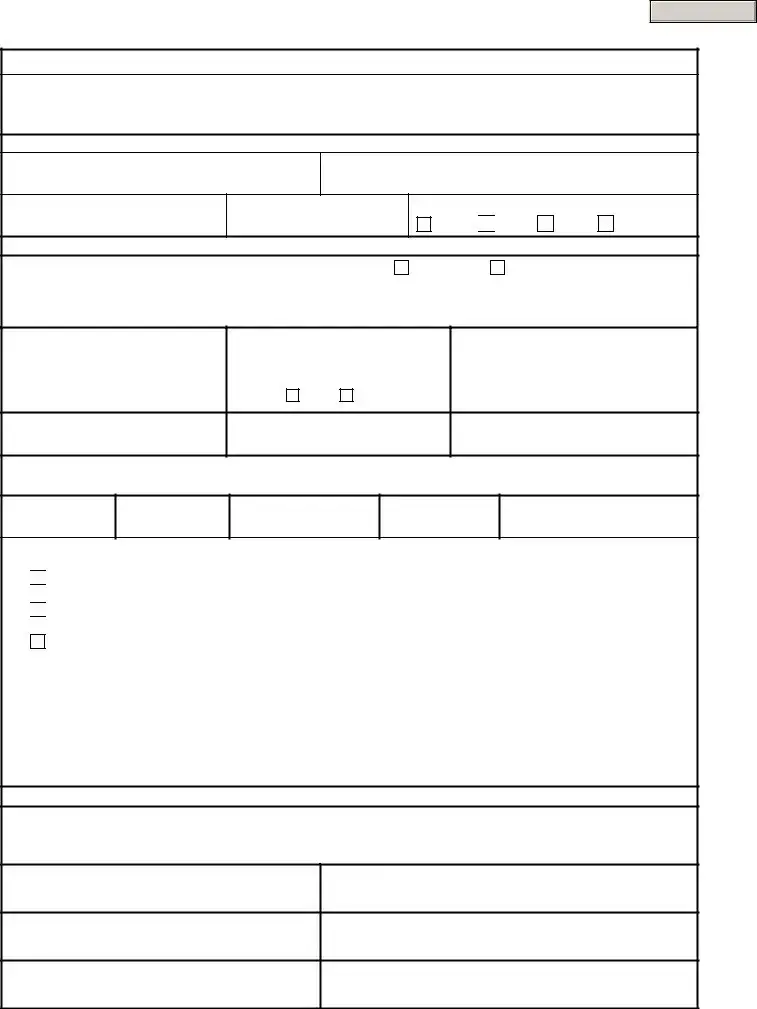Misconception 1: The AHRC 56 R form is only for active-duty officers.
This form is relevant for various categories of officers, including those in the Individual Ready Reserve (IRR) and Active Guard Reserve (AGR). It is not limited to just active-duty personnel.
Misconception 2: Submitting the AHRC 56 R form is mandatory for all officers.
While the information provided is valuable for promotions, completing the form is voluntary. However, failure to do so may delay the promotion process.
Misconception 3: The information in the AHRC 56 R form is kept private and is not shared.
The data on this form might be reviewed and reconciled with other databases, such as the USAR Personnel Database. Transparency in data is crucial for accurate personnel management.
Misconception 4: The form only serves to report qualifications, nothing more.
In addition to documenting qualifications, the AHRC 56 R form provides critical information regarding the officer's current position and any issues like double slotting or overlaps in assignments.
Misconception 5: The AHRC 56 R form is static and does not change.
Like other military documentation, the AHRC 56 R form can be updated and revised to reflect changes in protocol or regulations, ensuring it remains relevant to current practices.
Misconception 6: Completing the form guarantees a promotion.
While the AHRC 56 R form is important in the promotion process, it does not guarantee that the promotion will occur. Numerous factors affect promotion decisions.
Misconception 7: The form is only reviewed by a single individual.
Multiple levels of review take place. The officer’s immediate commander and representatives such as the RSC/DRC verify the information before promotions are finalized.
Misconception 8: There are no consequences for inaccurate information on the form.
Falsifying or providing inaccurate information can lead to serious repercussions. This could include disciplinary actions under the Uniform Code of Military Justice (UCMJ).



 IRR
IRR
 Is an AMEDD officer of either the Medical Corps or Dental Corps assigned to a position up to two grades to below the grade to which promoted to Chapter
Is an AMEDD officer of either the Medical Corps or Dental Corps assigned to a position up to two grades to below the grade to which promoted to Chapter 
 Is a Chaplain or Judge Advocate General Corps Officer assigned to a position up to one grade below the grade to which promoted Chapter
Is a Chaplain or Judge Advocate General Corps Officer assigned to a position up to one grade below the grade to which promoted Chapter